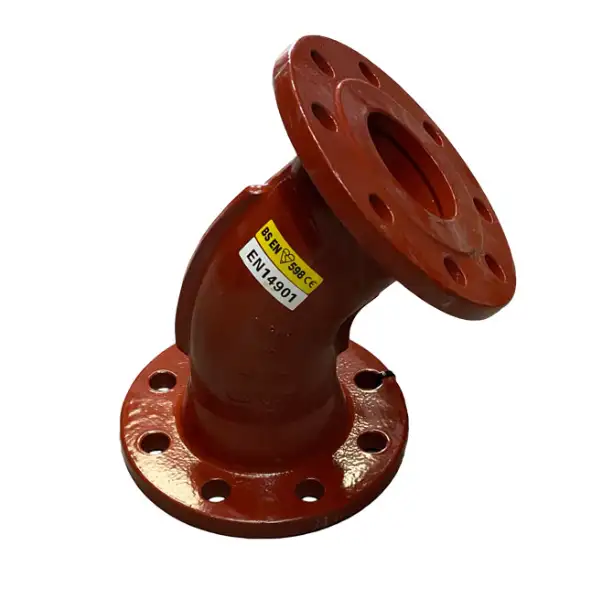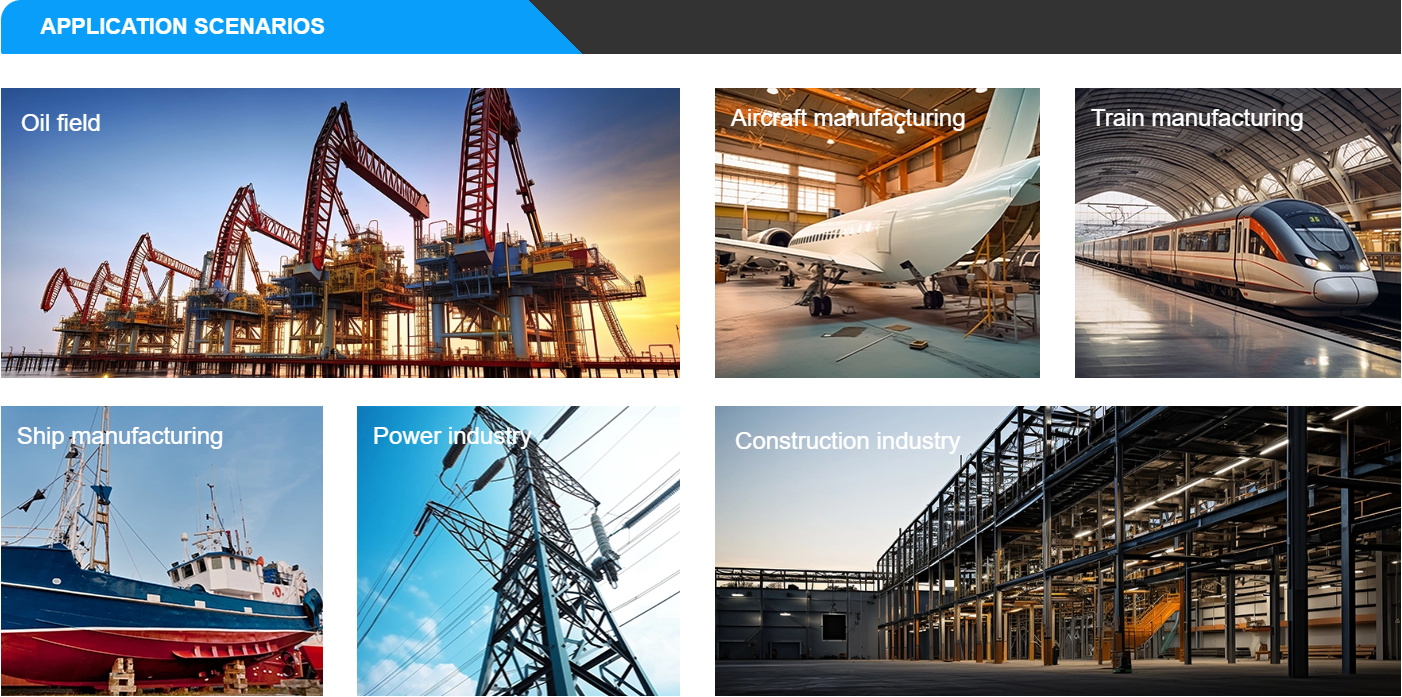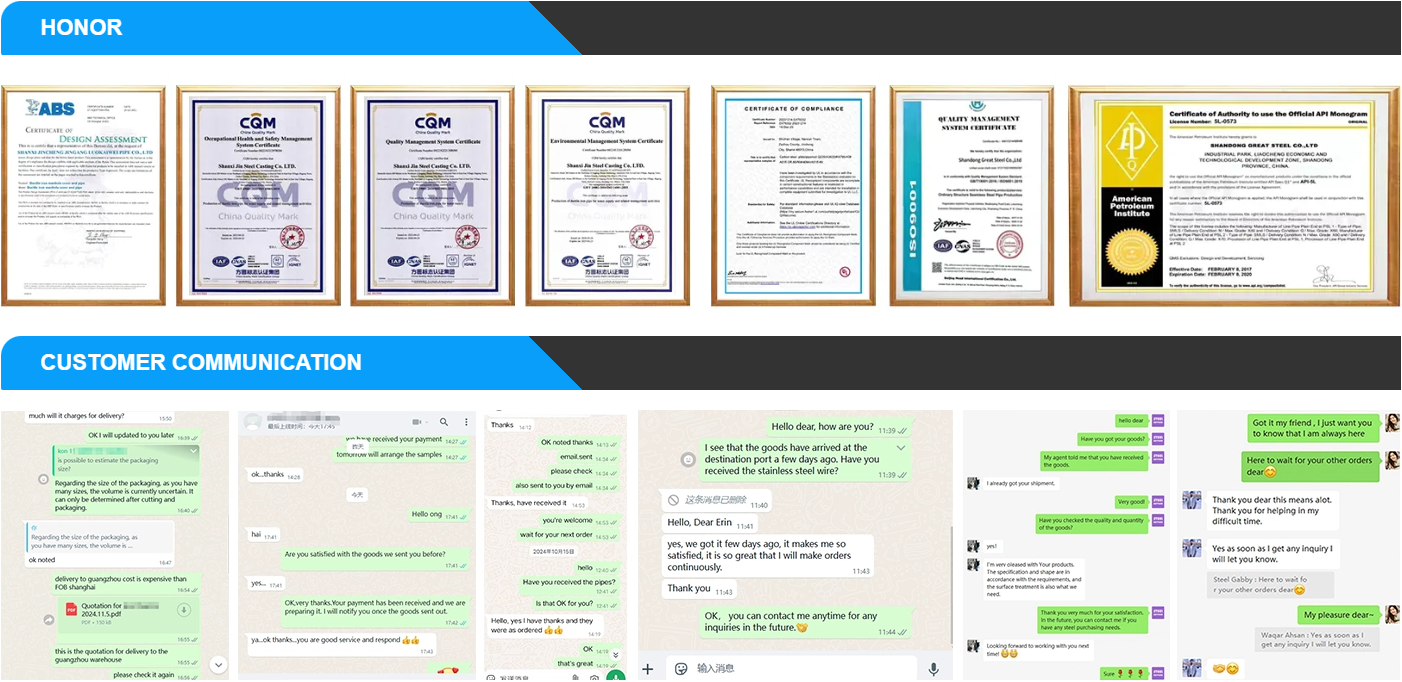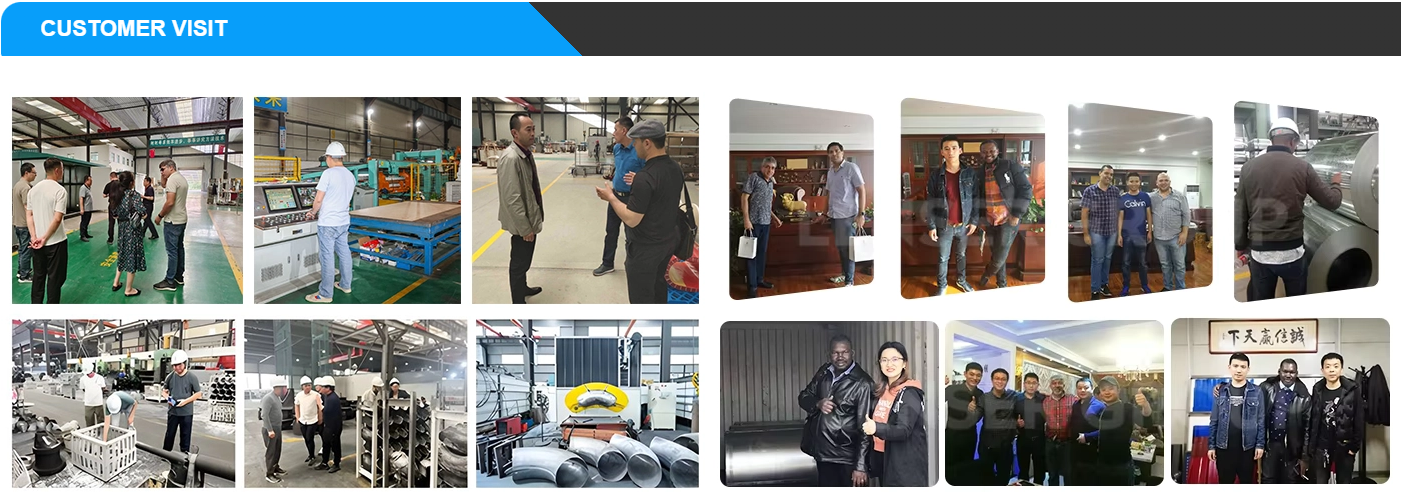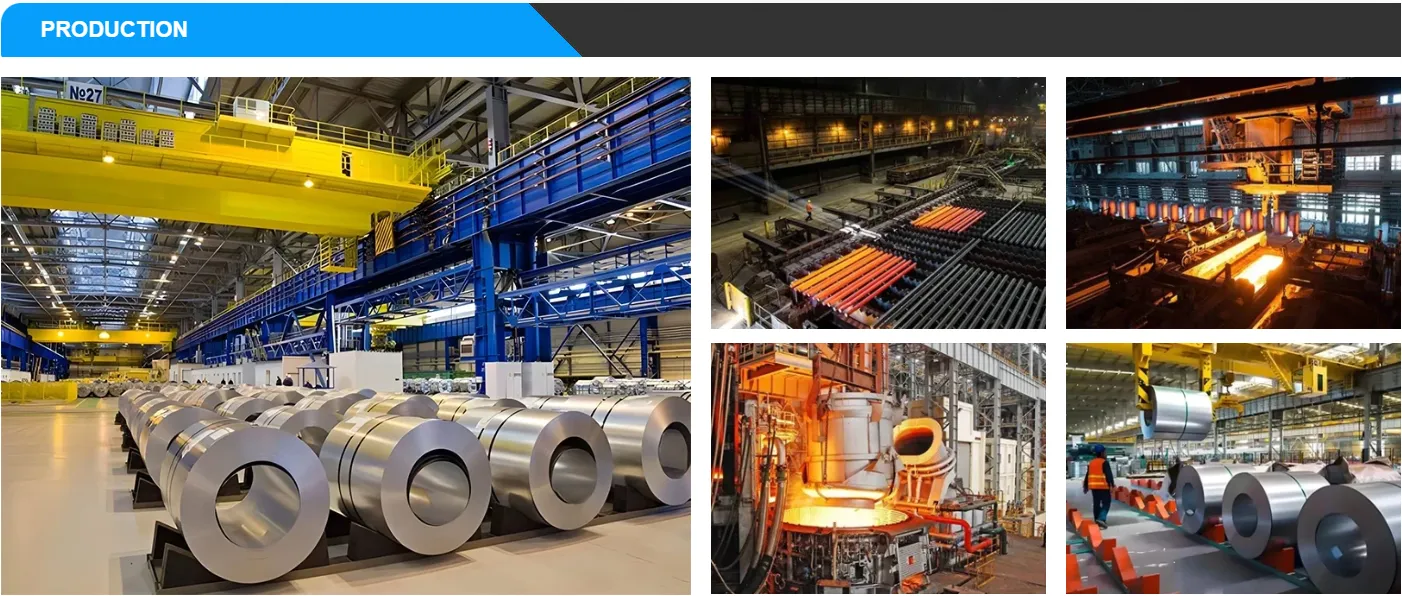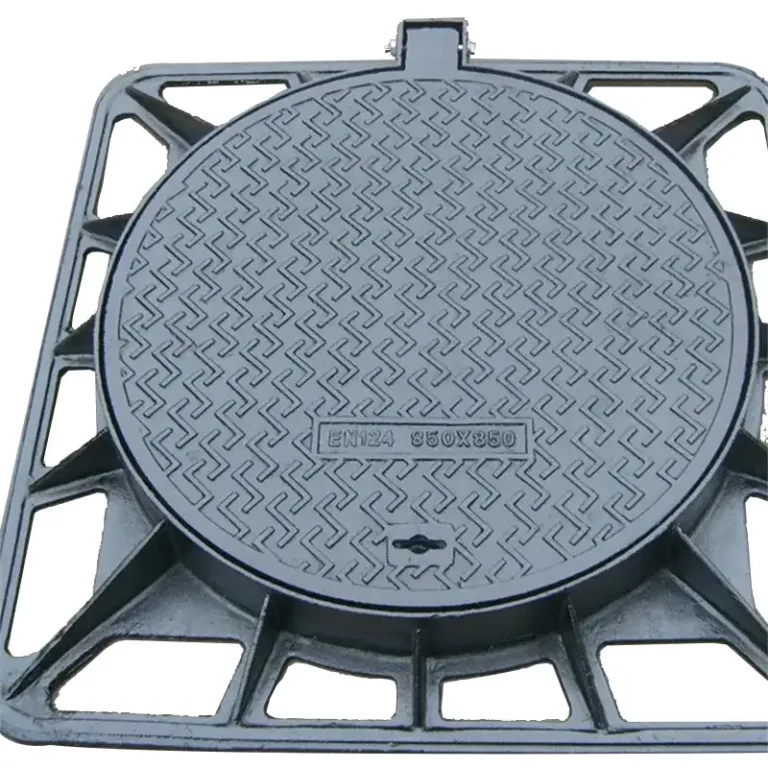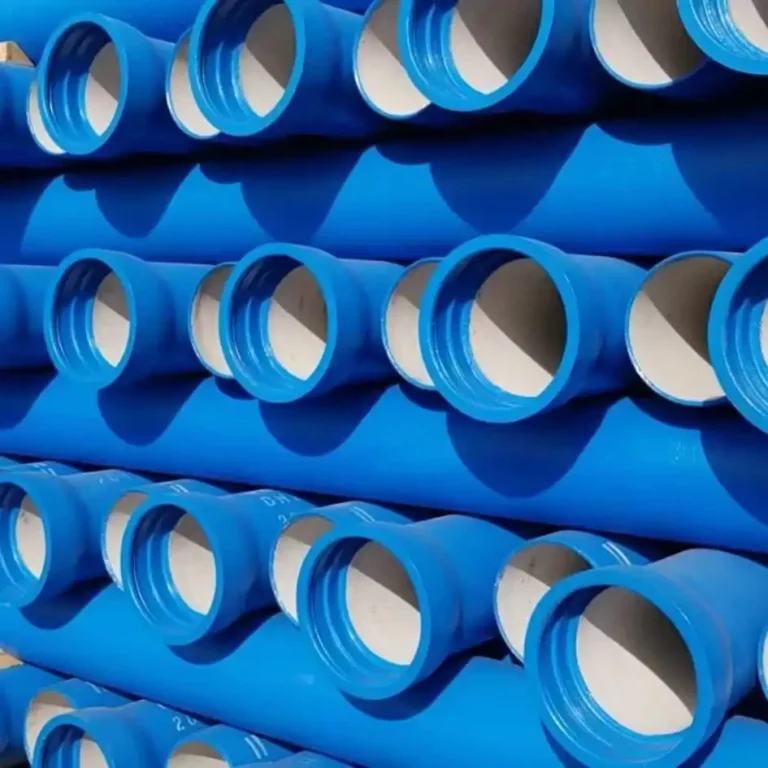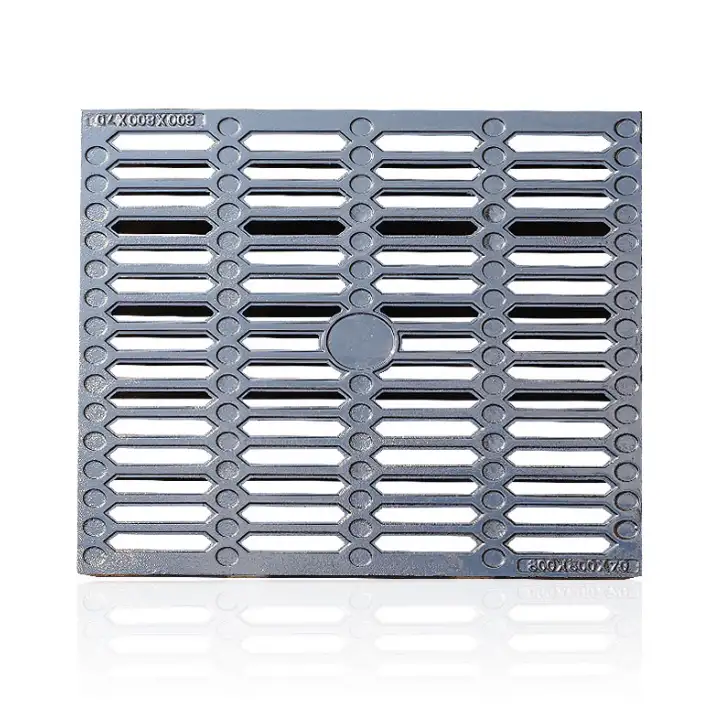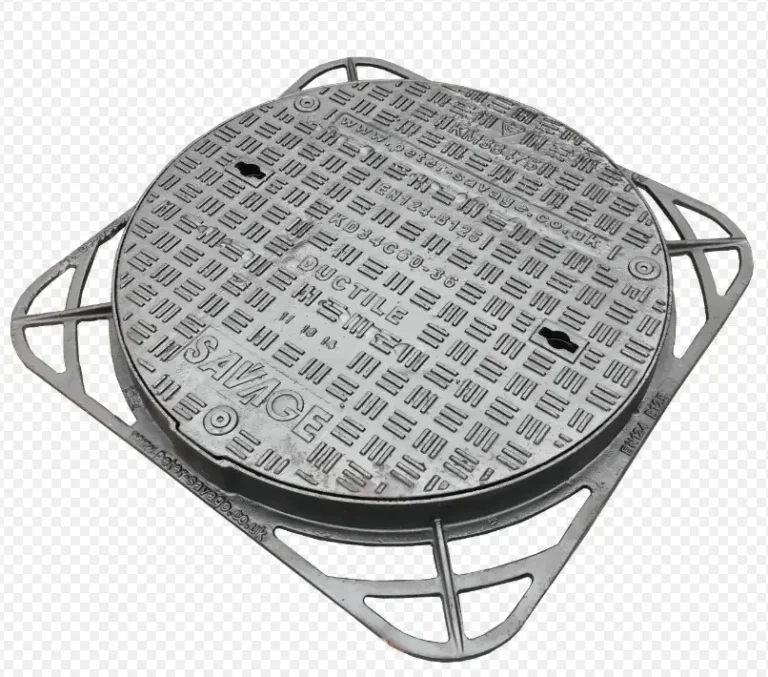Ductile iron is a widely used material in the construction and infrastructure sectors, particularly for its strength, durability, and resistance to corrosion. Among its many applications, ductile iron 45-degree bend fittings play a critical role in various piping systems, helping to redirect the flow of liquids or gases efficiently. This article will explore the specifications, price factors, dimensions, and common applications of ductile iron 45-degree bend fittings.
1. Introduction to Ductile Iron 45-Degree Bend Fittings
Ductile iron 45-degree bend fittings are designed to change the direction of the piping system at a 45-degree angle. These fittings are made from ductile iron, a material known for its excellent strength-to-weight ratio, corrosion resistance, and ability to withstand high-pressure conditions. These fittings are commonly used in water distribution systems, sewer systems, and in various industrial applications where pipe direction changes are required.
2. Key Properties of Ductile Iron
Before diving into the specifics of the 45-degree bend fittings, it’s important to understand the material—ductile iron.
-
Strength: Ductile iron is highly resistant to both tension and compression forces, making it suitable for applications that require robustness.
-
Corrosion Resistance: Ductile iron is resistant to corrosion, especially when coated, which makes it ideal for use in water and wastewater systems.
-
Ductility: Unlike traditional cast iron, ductile iron can undergo deformation before breaking, which provides extra reliability under heavy pressure.
-
Longevity: Ductile iron fittings can last for several decades, often exceeding 50 years when properly maintained.
3. Dimensions of Ductile Iron 45-Degree Bend Fittings
The dimensions of ductile iron 45-degree bend fittings can vary based on the application and the specific piping system. Generally, these fittings are available in various sizes to meet the needs of different projects.
| Fitting Size (DN) | Bend Radius (mm) | Wall Thickness (mm) | Weight per Piece (kg) |
|---|---|---|---|
| 50 | 200 | 8 | 4 |
| 100 | 250 | 10 | 10 |
| 150 | 300 | 12 | 15 |
| 200 | 350 | 14 | 20 |
| 300 | 450 | 16 | 30 |
These measurements are indicative, and variations in wall thickness and bend radius can occur depending on the manufacturer and specific project requirements.
4. Applications of Ductile Iron 45-Degree Bend Fittings
Ductile iron 45-degree bend fittings are commonly used in the following applications:
-
Water and Wastewater Systems: Ductile iron fittings help redirect the flow of water or sewage in municipal systems.
-
Industrial Applications: These fittings are used in industrial pipelines to change the direction of fluid flow in manufacturing processes.
-
Agricultural Irrigation: Used to control the flow of water in irrigation systems.
-
Fire Protection Systems: In firefighting systems, these fittings help in controlling the direction of water flow.
5. Advantages of Ductile Iron 45-Degree Bend Fittings
There are several reasons why ductile iron is preferred for 45-degree bend fittings in piping systems:
-
High Strength: These fittings are designed to withstand high pressure and heavy loads without deforming.
-
Durability: Ductile iron fittings have a long lifespan, reducing the need for frequent replacements.
-
Resistance to Corrosion: The material is highly resistant to corrosion, making it perfect for use in water and wastewater systems.
-
Ease of Installation: Ductile iron is relatively easy to install due to its material properties and the design of the fittings.
6. Price Factors of Ductile Iron 45-Degree Bend Fittings
The price of ductile iron 45-degree bend fittings varies depending on several factors:
-
Size and Dimensions: Larger fittings with a bigger bend radius tend to cost more.
-
Wall Thickness: The thicker the wall of the fitting, the higher the price, as thicker walls require more material.
-
Coatings: Coatings such as cement mortar linings can increase the cost, but they also improve corrosion resistance and extend the life of the fittings.
-
Manufacturing Process: The complexity of the manufacturing process, including whether the fittings are cast or forged, affects the cost.
-
Quantity: Purchasing fittings in bulk can often lead to discounts.
In general, ductile iron 45-degree bend fittings can range from $50 to $500 per unit, depending on the above factors.
7. Comparison with Other Pipe Fitting Materials
Ductile iron 45-degree bend fittings are often compared with other materials such as PVC, steel, and cast iron. Below is a comparison of key attributes:
| Property | Ductile Iron | PVC | Steel | Cast Iron |
|---|---|---|---|---|
| Strength | High | Low | High | Moderate |
| Corrosion Resistance | Excellent | Moderate | Good | Poor |
| Flexibility | Moderate | High | Low | Low |
| Cost | Moderate | Low | High | Moderate |
| Lifespan | 50-100 years | 10-20 years | 30-50 years | 30-40 years |
This comparison shows that ductile iron fittings excel in strength and corrosion resistance, making them ideal for long-term applications in harsh environments.
8. Common Issues with Ductile Iron 45-Degree Bend Fittings
While ductile iron 45-degree bend fittings have many advantages, there are some common challenges to be aware of:
-
Heavy Weight: Ductile iron is significantly heavier than materials like PVC, which can increase transportation costs and make handling during installation more difficult.
-
Cost: The material cost for ductile iron is higher compared to PVC, making it less budget-friendly for projects with tight budgets.
-
Susceptibility to Cracking: Although ductile iron is more flexible than gray iron, it can still crack under extreme pressure if improperly installed or maintained.
9. Installation Tips for Ductile Iron 45-Degree Bend Fittings
Proper installation of ductile iron 45-degree bend fittings ensures their longevity and functionality. Here are a few key tips:
-
Ensure Proper Alignment: Misalignment can lead to stress on the fitting, causing cracks or leaks.
-
Use Proper Tools: Use specialized equipment for handling heavy ductile iron fittings to avoid damage during installation.
-
Check for Leaks: After installation, always perform a pressure test to ensure there are no leaks in the system.
10. Environmental Considerations of Ductile Iron
Ductile iron fittings, including the 45-degree bend fittings, are known for their environmental advantages:
-
Recyclability: Ductile iron is highly recyclable, making it a sustainable choice for manufacturers.
-
Long Service Life: The extended lifespan of ductile iron fittings reduces the need for replacements, contributing to less waste.
-
Energy Efficiency: Modern ductile iron production methods are becoming more energy-efficient, helping to reduce the environmental footprint of manufacturing.
Frequently Asked Questions (FAQ)
Q1: What is the typical lifespan of ductile iron 45-degree bend fittings?
Ductile iron 45-degree bend fittings typically have a lifespan of 50 to 100 years, depending on factors such as maintenance and environmental conditions. Proper coating and installation can help extend their lifespan even further.
Q2: Why should I choose ductile iron over PVC for 45-degree bend fittings?
Ductile iron offers superior strength, durability, and resistance to corrosion compared to PVC. It is ideal for high-pressure systems and environments where the fitting will be exposed to harsh conditions, such as water and wastewater systems.
Q3: How do I maintain ductile iron 45-degree bend fittings?
To maintain ductile iron fittings, it’s essential to ensure they are properly coated, regularly inspected for cracks or wear, and aligned during installation. Additionally, cleaning the pipes and fittings periodically can help prevent the buildup of minerals or debris that might affect performance.
Q4: Can ductile iron 45-degree bend fittings be used in cold climates?
Yes, ductile iron performs well in cold climates, as it can withstand low temperatures without becoming brittle. However, extra care should be taken to ensure that the fittings are properly installed and insulated to prevent damage from freeze-thaw cycles.
Q5: Are ductile iron 45-degree bend fittings more expensive than steel fittings?
Generally, ductile iron fittings are more affordable than steel, but the price can vary based on factors like size, coating, and specific manufacturing processes. Steel fittings may be more expensive, but they are often used in applications where strength is the primary concern.
Q6: How do I choose the right size of ductile iron 45-degree bend fitting for my system?
Choosing the right size of ductile iron 45-degree bend fitting depends on the pipe diameter and the system’s pressure requirements. It’s essential to match the fitting size with the specifications of the pipeline system to ensure proper functionality and avoid leaks.
